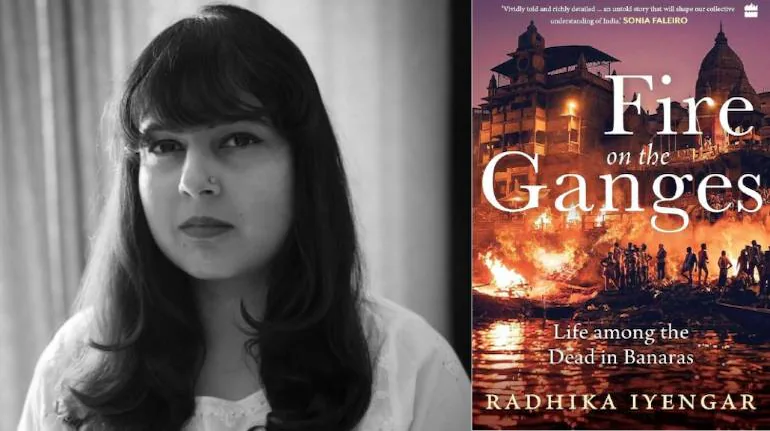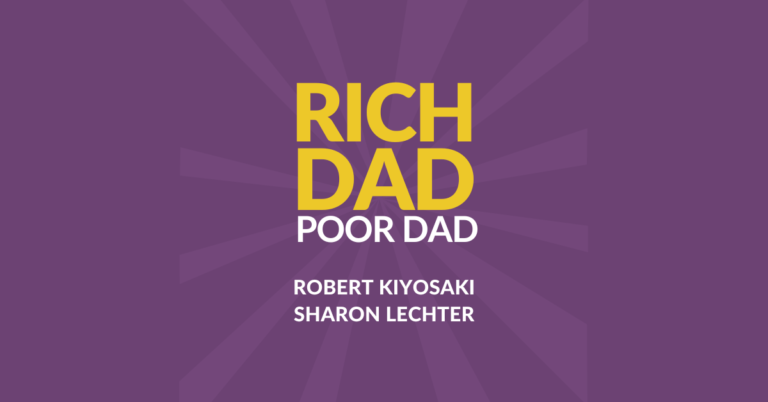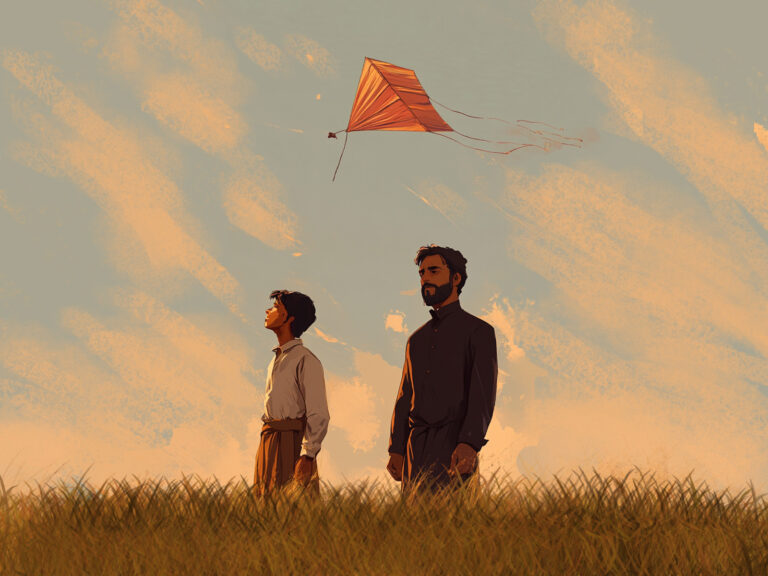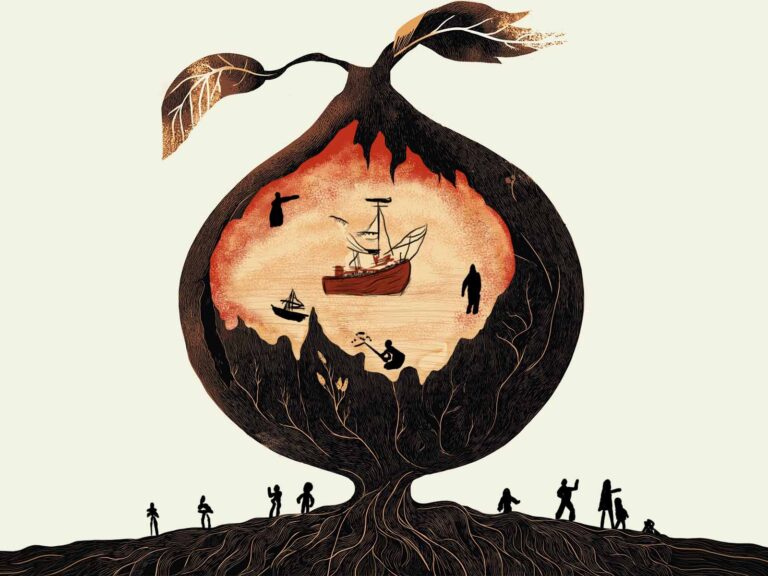Fire on the Ganges Life among the Dead in Banaras

In her first book, “Fire on Ganges,” Radhika Iyengar captures “Life among Dead in Banaras” in 348 pages. The book describes the day-to-day activities of the doms who reside on Banaras’ Chand Ghat, as indicated in its subtitle. From a ritualistic perspective, Dom’s roles cannot be rejected or replaced, despite their historical treatment as social outcasts in Hindu culture. Doms have always been viewed through the prism of Hindu society’s social order as undesirable but essential individuals.
The book skips over the history, folklore, origins, and legends of doms. Rather, it includes passages from the present day. A few characters from a Chand Ghat alley have been selected by the author, and their experiences of struggle, ambition, love, betrayal, grief, and adventures have been highlighted. These narratives can be applied to the entire community. Through this book, Radhika Iyengar hopes to communicate the difficulties that doms have in surviving in a society where the stigmas associated with antiquated customs have always cast a shadow over their life. By binding this nonfiction work into a fictional narrative, the author allows readers to view life via the perspectives of characters Dolly, Bhola, Komal, Lakshya, and Shortcut.
Dolly Chaudhury, a self-sufficient widow and Chand Ghat’s first businesswoman, is the book’s opening character. She raised her five children by herself; three of them were given to her relatives since she was unable to support them all. She lived with only her youngest daughter and eldest son. The cause of her husband’s death is still unknown. Unsolved due to the involvement of powerful dom community members, but she has come to terms with the situation and is making every effort to move on. The mohalla people are angry with her at the start of the novel because she tried to be financially independent rather than deciding to choose a man’s protection. By the conclusion, she has awakened from her dormant nature and is challenging patriarchal standards on a personal level. She gave some examples for Dom ladies, particularly the Chand Ghat widows.
Another narrative tells of the love romance between Dolly’s sister-in-law Komal and her brother Lakshya. Komal was a member of a Brahmin community that lived in Chand Ghat’s Yadav mohalla. Laksh belongs to Chand Ghat’s dom. Every narrative in the book is connected by a counterpart story. The narrative of George Grey and Vikram Mathur, and how Grey contacted Mathur after viewing his Chand Ghat documentary, expressing his wish to sponsor a few youngsters and give their families financial support. Lakshya was one of those fortunate guys who had the chance to go to school. After Komal’s romance went viral and her neighbours started harassing her, Lakshya made the decision to quit his studies and pursue a job in order to help Komal move and pay for her schooling. Their wedding ceremonies and customs are described in the book, and an afterword offers a peek into their happily ever after.
Another character in this novel who was one of the sponsored kids is called Shortcut. There isn’t a single mention of his true name in the novel; everyone who knows him calls him by the nickname Shortcut. The same name is also used by the author. His struggle tale is the same as that of any other Chand Ghatdom kid. After receiving finances for his schooling, his life completely altered, and he was even succeeding academically until, like any typical adolescent, he became side-tracked and began an affair with a lady. It was short-lived, and when it failed, he failed his twelfth grade and was sent back to Chand Ghat’s funeral grounds. But he was inspired to try again after witnessing his childhood friend triumph and be able to permanently escape that poverty. With the assistance of an NGO, he reappeared for his 12th grade exams, passed, and was accepted into a part-time graduate programme, allowing him to work and earn money rather than going back to Chand Ghat. He is getting ready to permanently leave Chand Ghat for government duties, according to the afterword.
Bhola is a different character in this book who received funding for his schooling. Because of the caste stigma, he kept his identity a secret even though he was the most honest student and the first of his doms from Chand Ghat to get admitted to a private university. His darkest dread eventually materialised, but that didn’t stop him. But luck had never been on his side. Each time he succeeded in leaving Chand Ghat, Chand Ghat was able to drag him back. However, his companion Shortcut found encouragement in his perseverance and struggle. His mother’s disease dealt him the last blow, forcing him to quit his lucrative position. By the time the novel closes, his mother has passed away from the illness, and he has permanently moved out of Chand Ghat. Despite this, he is grateful to his older brother, who has always supported him no matter what. An excerpt from the afterword shows that he is happy with his life yet still strives for more.
Along with the central characters the backdrop of COVID, the struggles of the pandemic and daily problems are also vividly described in the book via some subordinate characters which makes the reading experience more lively. Several scenes are minutely described, including the bodies piling up during the pandemic, people who live among the dead becoming scared for the first time, Doms refusing to cremate the COVID-infected bodies, the electric crematorium that was closed for a long time finally being used and having a positive impact on both the environment and the workers there, and more. In reality, Radhika Iyengar aspired to live up to her description of “life among dead in Banaras” in the subtitle. She was able to capture every little detail that would make the book more enjoyable to read. As a journalist, she incorporates an element of ethnographic inquiry into the book by quoting and consulting anthropologists when needed.
Despite the book’s length due to its page count, it reads smoothly enough to be finished in one sitting. Without overlapping them, the author has skilfully combined and depicted the characters’ entwined stories in her work. She hides her identity by using fictitious names. The filmmaker, Ghat, and the foreign assistant were all using false identities. Her earlier publications contain the actual specifics published with all the material that is available to the public domain, thus it’s possible that the attempts were in vain. However, it still demonstrates that even though the characters’ identities were made up, their stories weren’t. Readers of fiction and non-fiction should consider adding this book to their library. “Fire on Ganges” is a must-read for everyone who like knowledge presented in a narrative fashion.








